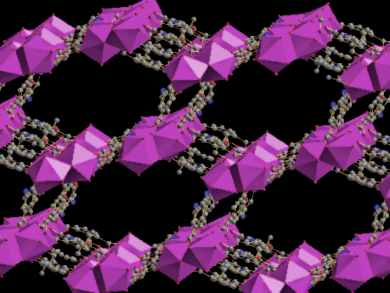Metal-organic frameworks (MOFs) are useful and highly tuneable materials for a variety of applications, including gas storage, catalysis, and electronics. Another application is their use as luminescent sensors, which combine ease of operation, low cost, and non-destructive analysis. For these applications in particular, lanthanides are used due to their sharp emission bands, long luminescence lifetimes, and large Stokes shifts.
Weisheng Liu, Lanzhou University, China, and colleagues have developed a selective and sensitive europium MOF for the detection of Cr(VI) anions (Cr2O72−/CrO42−) and Fe(III), and picric acid. Dichromate is very toxic and a potent carcinogen; picric acid is a common and powerful polynitroaromatic energetic material.
The synthesized Eu-MOF, Eu4L3 (L = 5,5′-(carbonylbis(azanediyl))isophthalic acid) has promising physical properties for use in sensors, such as thermal stability up to 300 °C, selective fluorescence quenching up to 90 % in the presence of Fe(III), Cr(VI), and picric acid, as well as excellent recyclability.
- A Multi-responsive Regenerable Europium-Organic Framework Luminescent Sensor for Fe3+, CrVI Anions, and Picric Acid,
Wei Liu, Xin Huang, Cong Xu, Chunyang Chen, Lizi Yang, Wei Dou, Wanmin Chen, Huan Yang, Weisheng Liu,
Chem. Eur. J. 2016.
DOI: 10.1002/chem.201603607



